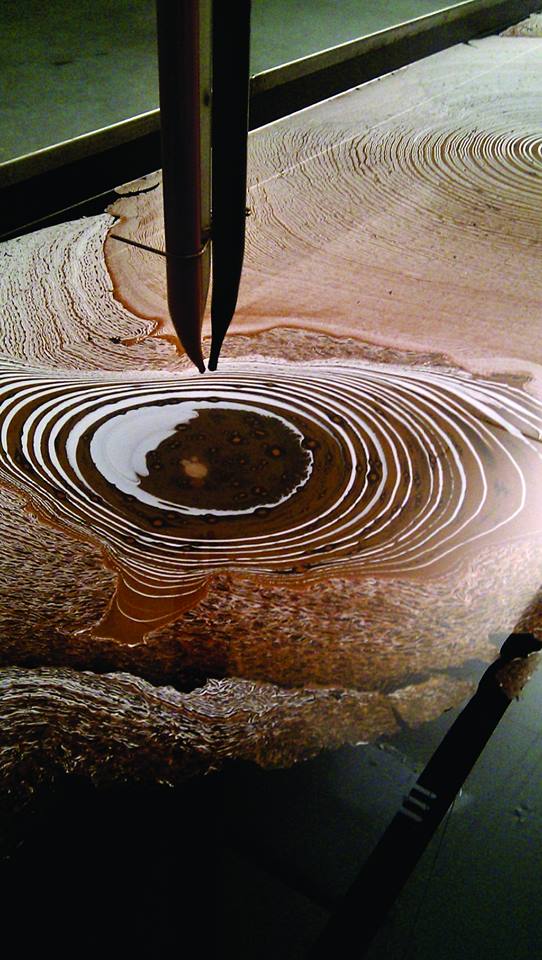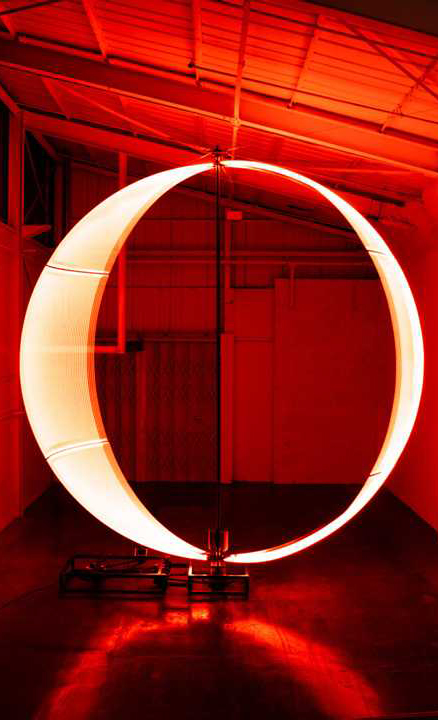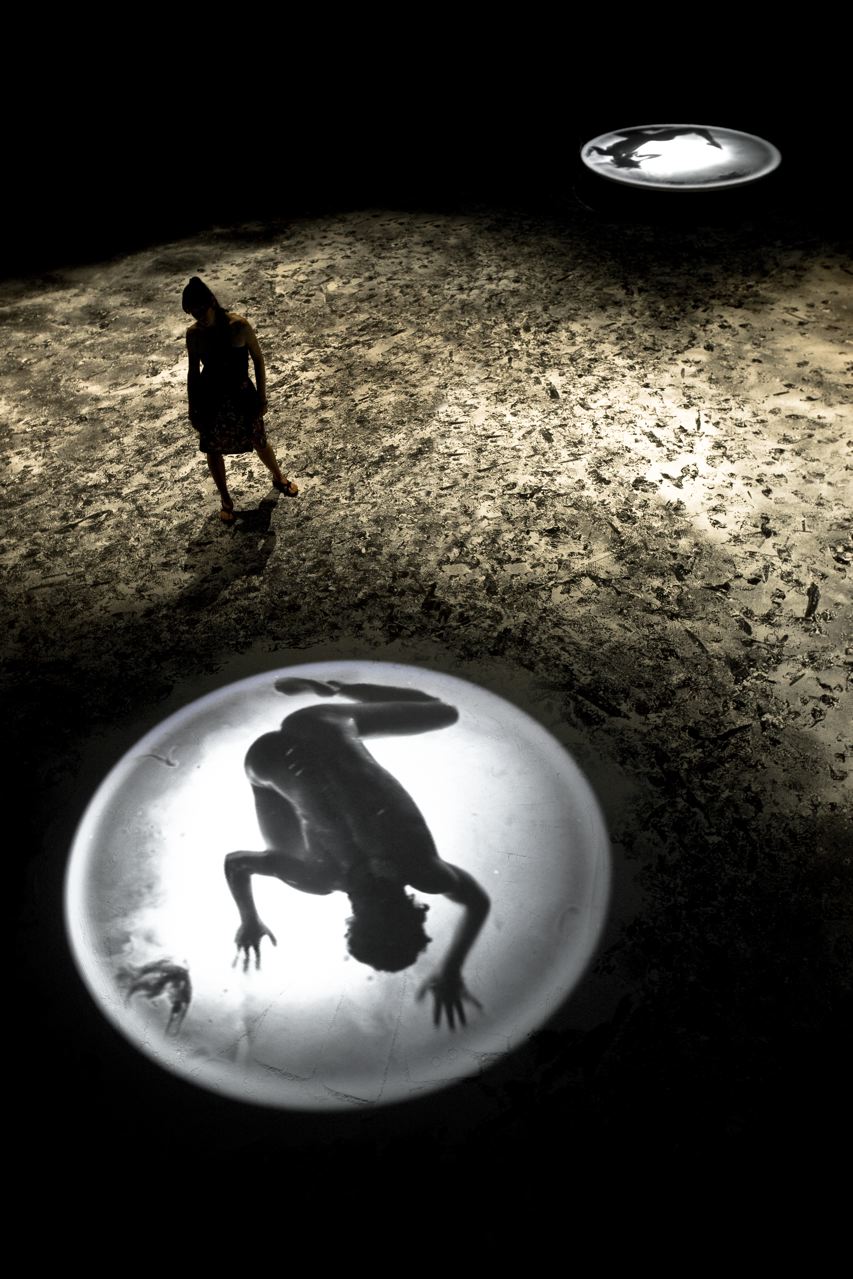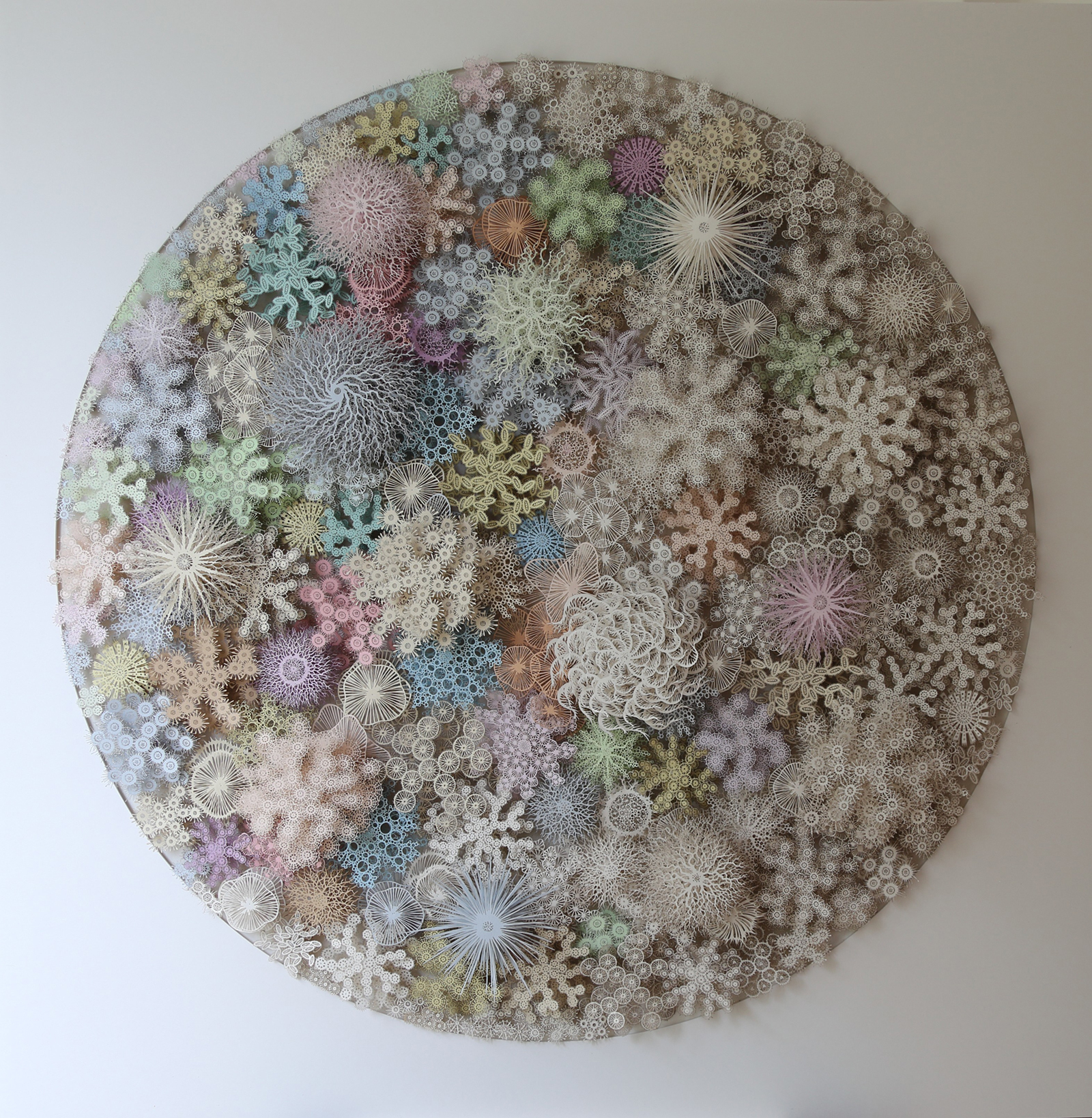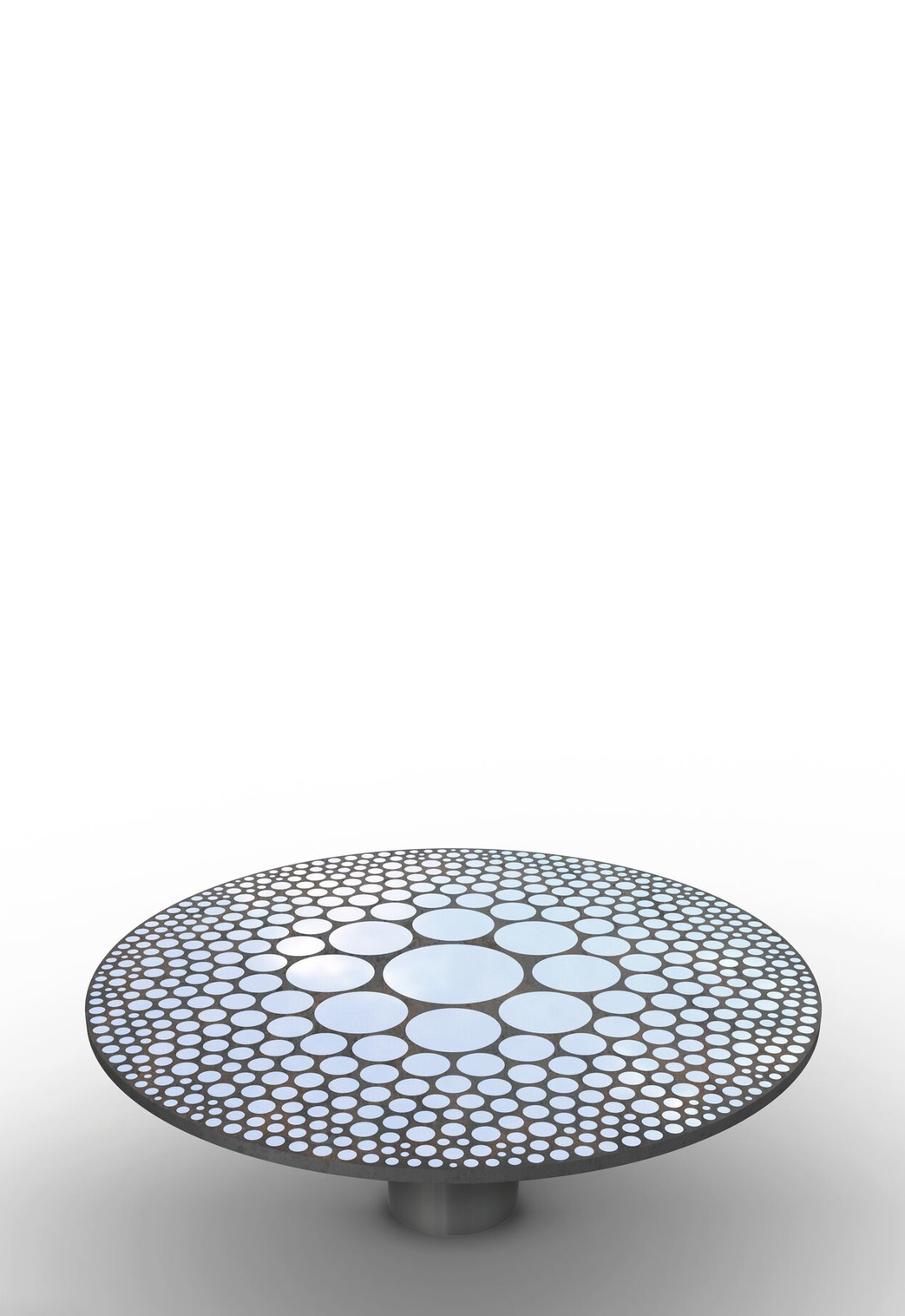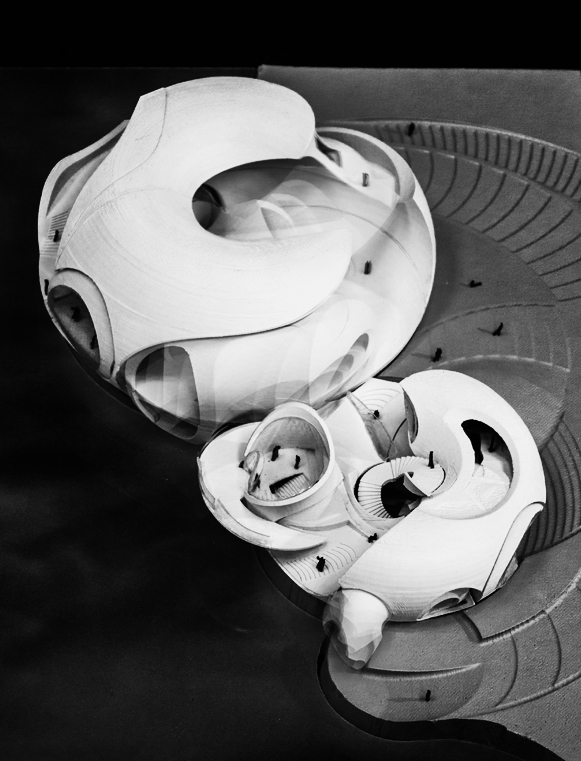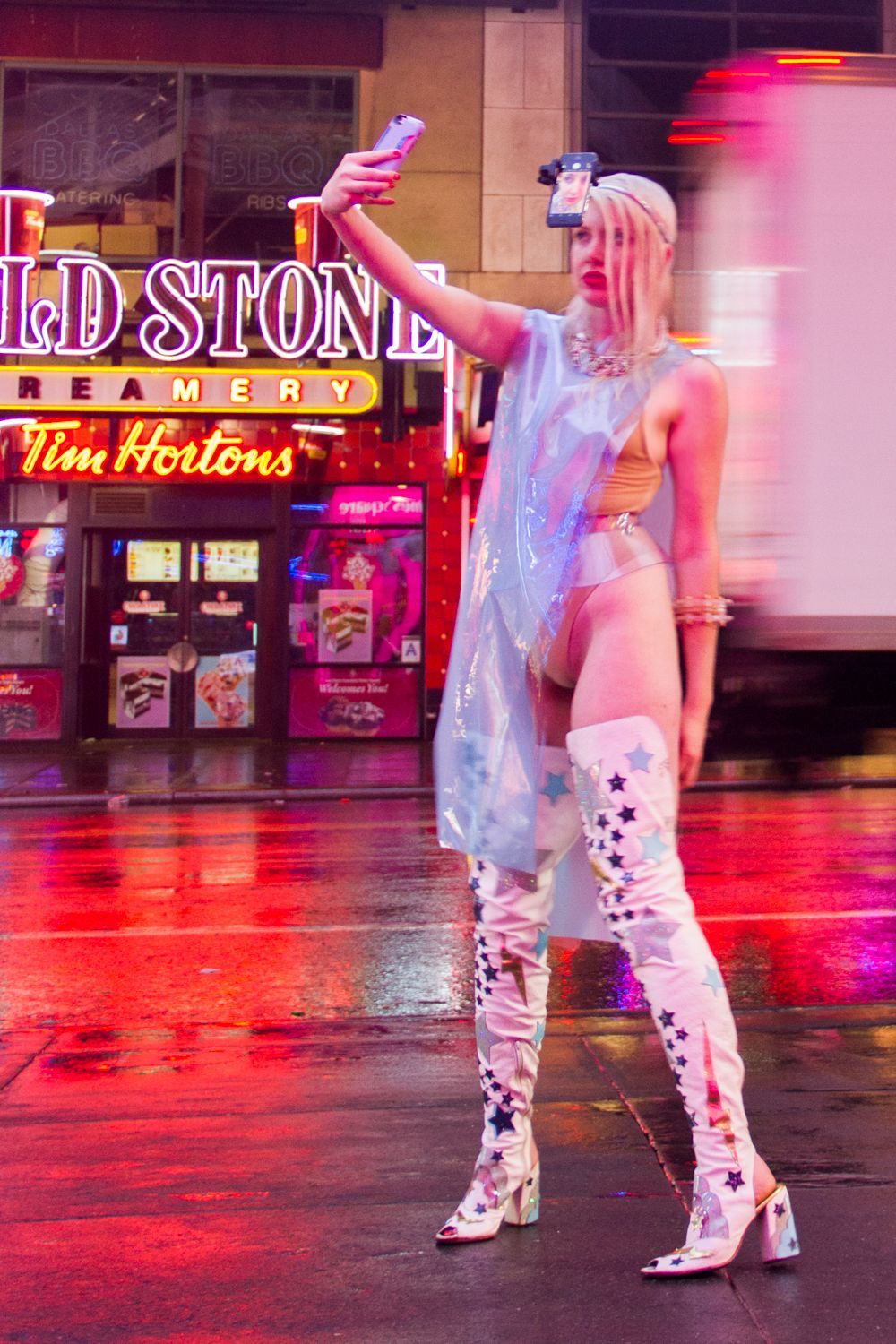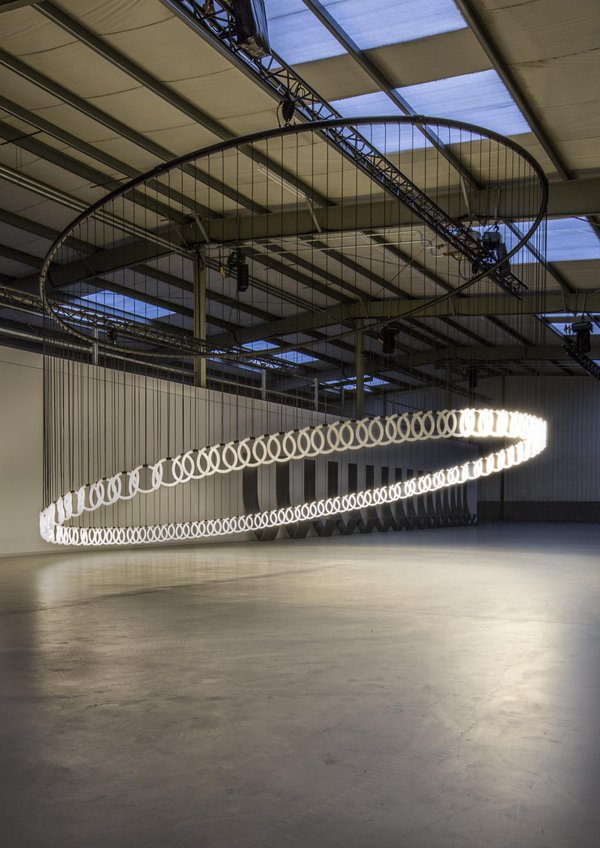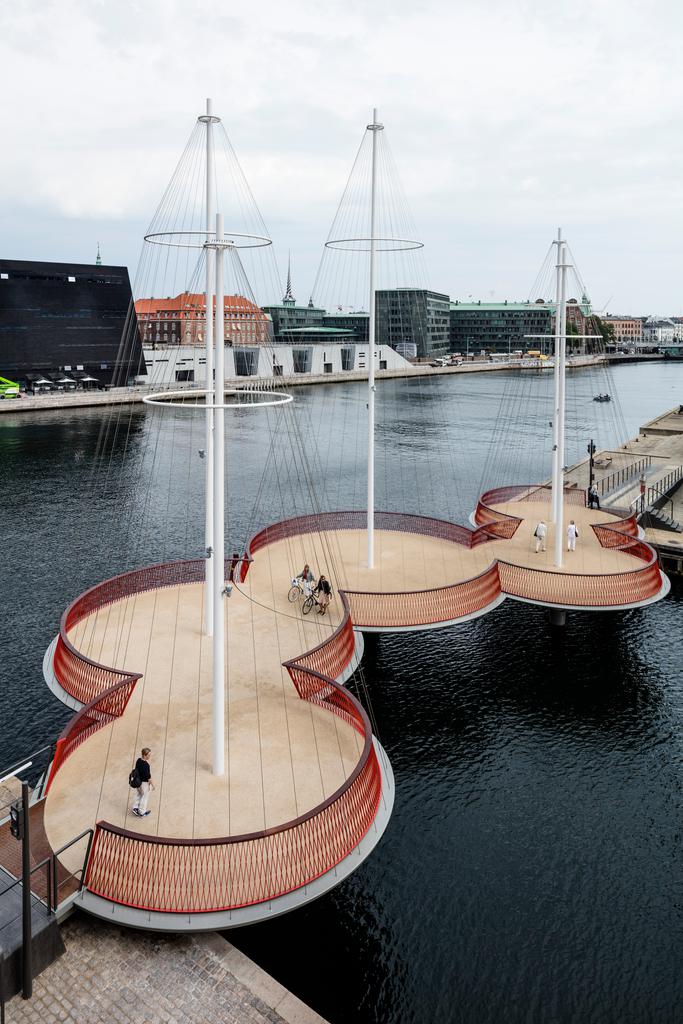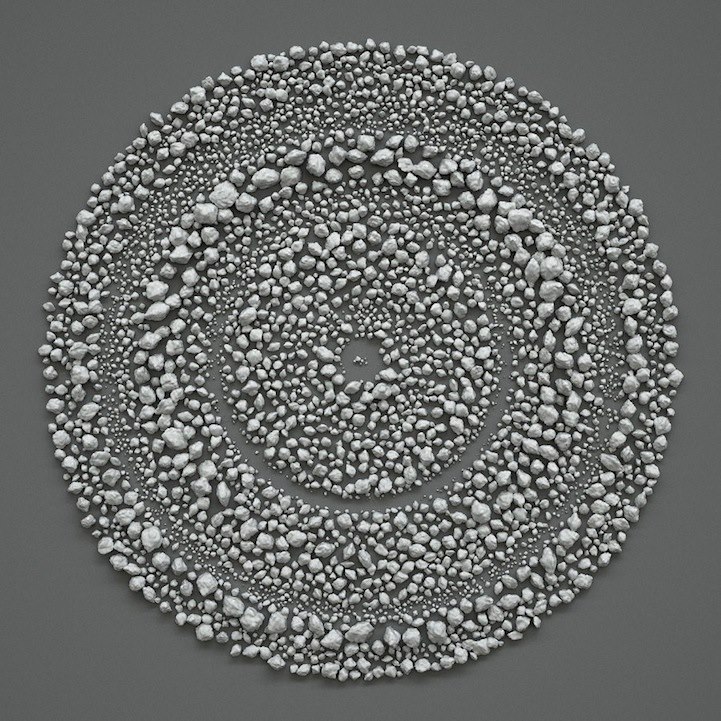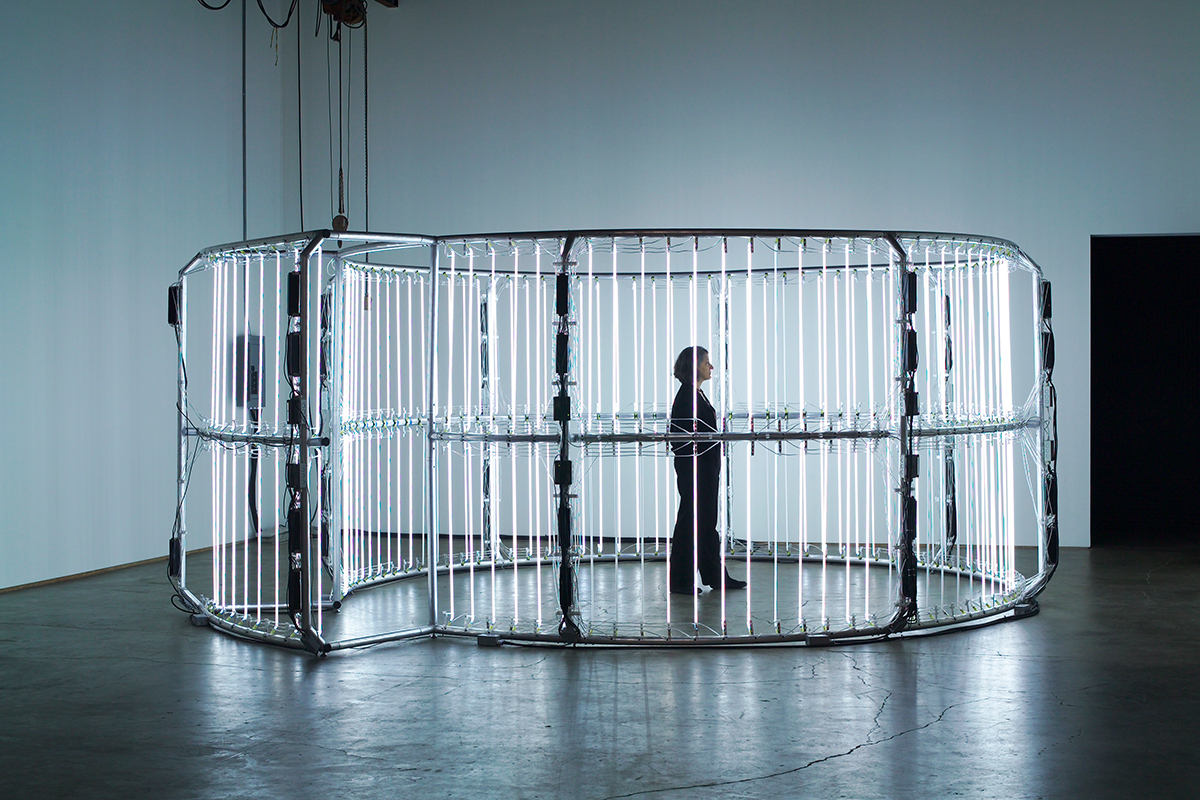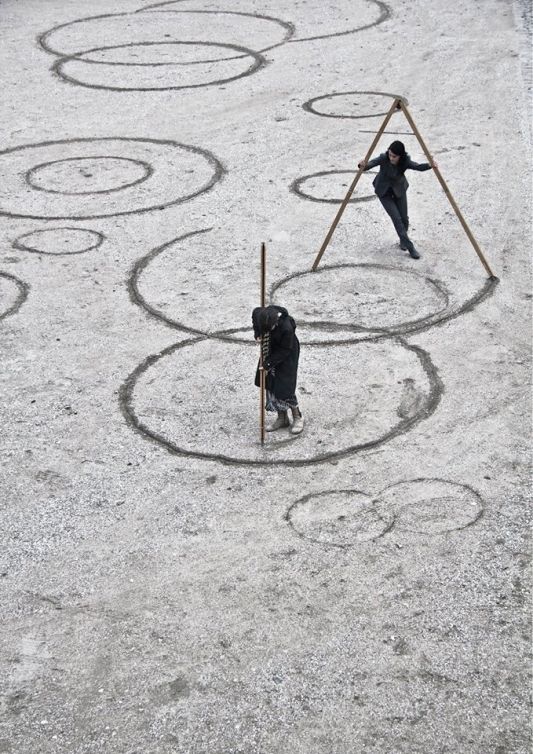Sonic Mountain
As a unique site-specific commission for the Donum Estate, Los Angeles-based artist Doug Aitken has created the ethereal work Sonic Mountain (Sonoma), three concentric circles of suspended stainless-steel pipes whose differing lengths form a wave at their base, mirroring the free Euler-Bernoulli shape that describes the chime’s frequency. Installed in the eucalyptus grove, measuring forty-five feet in diameter and twice human height, and comprising 365 chimes — one for each day of the year — Sonic Mountain (Sonoma) works with one of Donum’s most persistent elements, the Carneros breeze that cools the grapes and creates a temperate zone for growing Pinot Noir. Each day, the warm wind begins its soft whisper, rustling through the vines and trees, building in strength through the day until mid-afternoon, and then gradually diminishing in force. Known to have been used since at least the ancient Roman period in Europe and the second century in India and China, wind chimes create chance, inharmonic music. At Donum, Aitken has teamed up with his friend the composer Terry Riley to compose chords in the chimes to be played by the wind , depending on how it blows, so the lyrical work sounds throughout the estate, demonstrating the artist’s practice of making installations that synthesize many media and are never constrained by tradition.
video



